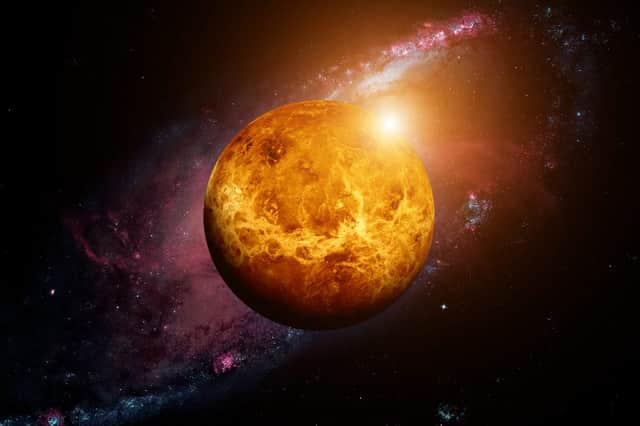Scientists have discovered phosphine gas on Venus - but does that really mean there’s life in space?


The debate as to whether beings exist on planets other than Earth has been around for centuries, but new scientific findings now suggest signs of life on Venus.
A team of astronomers, led by Cardiff University’s Professor Jane Greaves, has discovered the presence of phosphine gas in the high clouds of Venus, which suggests that colonies of living microbes could be residing on the planet.
Advertisement
Hide AdAdvertisement
Hide AdWhat is phosphine gas?
Phosphine gas is a molecule made up of one phosphorus atom and three hydrogen atoms.
The molecule is also produced on Earth by microbes that live in oxygen-free environments, such as swamps, or with microbes living in the guts of animals like penguins.
On Earth, bacteria produce phosphine gas after absorbing phosphate minerals and then adding hydrogen to it.
Where was the gas found?
The phosphine molecules were first detected by the James Clerk Maxwell Telescope (JCMT), located near the summit of Mauna Kea in Hawaii.
Advertisement
Hide AdAdvertisement
Hide AdThe molecules were found in the clouds high in Venus’ atmosphere, which are made of around 90 per cent sulphuric acid. On Earth, the major use of sulfuric acid is in the production of fertiliser.
The surface of Venus is extremely hot, with a mean temperature of around 464C (867F), and therefore too hot to sustain life. However, astronomers have considered that life could survive in more moderate conditions, on clouds high in the planet's atmosphere, which have a cooler temperature of 30C (86F).
Professor Greaves said, "This was an experiment made out of pure curiosity, really - taking advantage of the JCMT's powerful technology.
"I thought we'd just be able to rule out extreme scenarios, like the clouds being stuffed full of organisms. When we got the first hints of phosphine in Venus' spectrum, it was a shock.”
Advertisement
Hide AdAdvertisement
Hide Ad